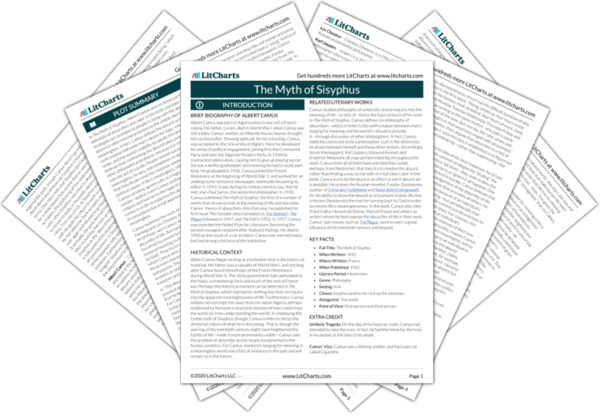Camus studied philosophy at university, and an inquiry into the meaning of life—or lack of—forms the basis of much of his work. In
The Myth of Sisyphus, Camus defines his philosophy of absurdism—which, in brief, is the confrontation between man’s longing for meaning and the world’s refusal to provide it—through discussion of other philosophers. In fact, Camus explicitly claims not to be a philosopher, such is the distinction he draws between himself and these other writers. Accordingly, Soren Kierkegaard, Karl Jaspers, Edmund Husserl and Friedrich Nietzsche all crop up intermittently throughout the work. Camus feels all of them have one fatal flaw (aside, perhaps, from Nietzsche): that they try to resolve the absurd, rather than finding a way to live with it in full view. Later in the book, Camus turns to literature in an effort to see if absurd art is possible. He praises the Russian novelist, Fyodor Dostoevsky (author of
Crime and Punishment and
Notes from Underground), for his ability to show the absurd as it functions in daily life, but criticizes Dostoevsky the man for turning back to God in order to resolve life’s meaninglessness. In the book, Camus also cites Franz Kafka, Honoré de Balzac, Marcel Proust and others as writers whom he feels expose the absurdity of life in their work. Camus’ own novels, such as
The Plague, were to exert a great influence of the twentieth century and beyond.
